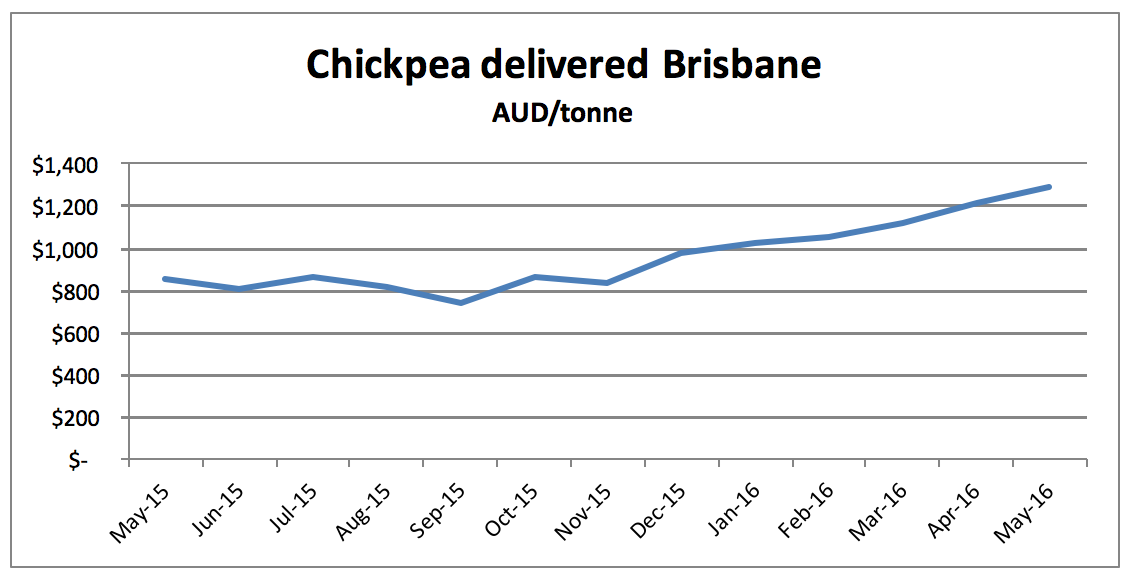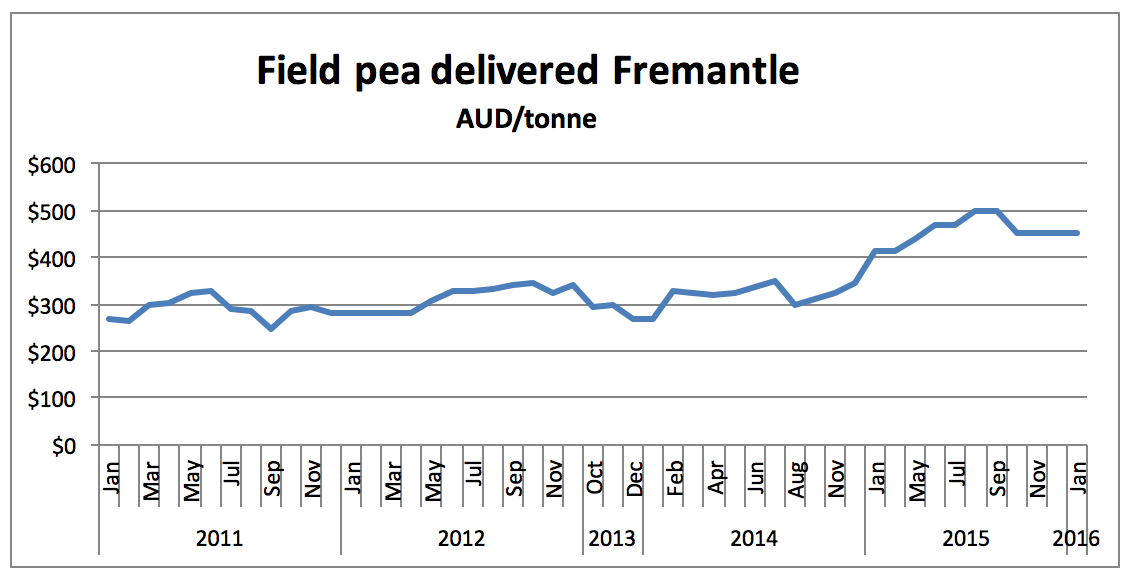Get pulsed for 2017
by Alan Meldrum
The United Nations has designated this year as ‘International Year of Pulses’ (IYP2016), putting a global focus on the many benefits of pulses for farmers and consumers.
For Australian farmers, IYP2016 coincides happily with strong pulse prices, hungry markets and reasonable prospects of profitable yields from this year’s lupin, chickpea, lentil, field pea and faba bean crops. After a dry start, eastern state farmers are now planting into adequate reserves of moisture and, with the climate changing from an El Nino pattern to a La Nina pattern, look to have a reasonable, wet winter season ahead.
The picture in Western Australia is better, perhaps the best ever, with extensive autumn rain soaking soils from Geraldton to Esperance. Seasonal prospects are excitingly good, with the proviso that winter rains are timely and spring delivers average rainfall.
The one thing that WA farmers are missing in this most exciting of seasons is the ability to plant a range of pulse crops and capitalise on the good prices available for the coming harvest. The missing link is a combination of a lack of seed, particularly for chickpea, and the confidence required to bring a ‘new’ crop into the rotation.
Why will pulses work for you?
Today’s pulse varieties and recommended agronomy techniques are markedly improved compared to those used in the 1990s, reducing production risk substantially. These improvements include:
- higher yield potential
- improved disease resistance or tolerance e.g the resistance status of new chickpea varieties has all but eliminated production loss from ascochyta blight
- more viable and efficient herbicide options for grass and broadleaf weed control
- lentil varieties with tolerance to Group B herbicides increases the options for broadleaf weed control.
No-till farming and full stubble retention works especially well for pulses, providing increased seed bed moisture retention, reduced aphid attractiveness and reduced wind erosion risk. The improved soil tilth that comes from long term no-till and stubble retention also allows deep planting of pulses to chase moisture when needed, or to delay emergence to enable a desiccant herbicide to be used to control grass weeds.
Will you get into pulses in 2017?
Let’s get the fundamental issue discussed first. If you haven’t got seed, you won’t be planting a pulse crop! The chickpea area in WA would have been substantially higher this year if there was seed in silos ready to go. Because of a run of indifferent seasons and lowish prices, the industry has not accumulated sufficient seed stocks to cater for the sudden demand that came in 2016.
This has highlighted the need to act early and secure seed now for the 2017 season. This applies to all pulse species, not just chickpea. No matter which species—lupin, chickpea, lentil, faba bean or field pea—you decide will fit your farming system, you can place an order with Seednet, Heritage Seeds and PB Seeds to expand your options for next season. With more growers having lupin, chickpea, lentil, faba bean and field pea in the ground this year, and with a favourable seasonal outlook, there should be ample seed available to fill all orders.
But will prices still be strong in 2017 and beyond? Of course, there are no guarantees for future pulse prices, however demand from rising populations in the Sub-continent and Asia is expected to remain strong. Another significant factor supporting the current high prices is the failure of the last three monsoon seasons in India.
Pulse production in India primarily occurs in their winter, from October to April. This winter crop relies almost entirely on high rainfall in the monsoon season from June to September, to fill the soil profile and provide stored water for irrigation.
The just-harvested winter crop in India was below average, meaning there will be strong demand and a large requirement for pulse imports following the 2016 Australian harvest. This has seen very attractive forward contracts for pulses being offered on the east coast this season, similar to those offered during October 2015.

Demand is also being seen for lentil and field pea, as seen in the graph for field pea delivered into Fremantle showing a lift in prices since the start of 2015.

If the 2016 monsoon delivers good rainfall, India’s import needs may decline after the 2017 Australian pulse harvest has been exported, and prices may fall accordingly. But by how much? That’s a big unknown that highlights the marketing risk associated with pulses, however other commodities also face marketing risk with flat wheat prices the norm at the moment.
While high prices are attractive and volatility is an important factor, focussing only on the price overlooks the other benefits that pulses provide to the farm system and business, including:
- diversity in commodities spreads the marketing risk
- diversity in weed control options allows more rotation of herbicide modes of action (MOA) across the crop rotation
- potential yield boost in subsequent cereal and canola crops through soil disease reduction and residual nitrogen
- higher protein in wheat following a pulse crop, with the gain being dependent on the rotation and the amount of residual soil nitrogen after the pulse crop.

